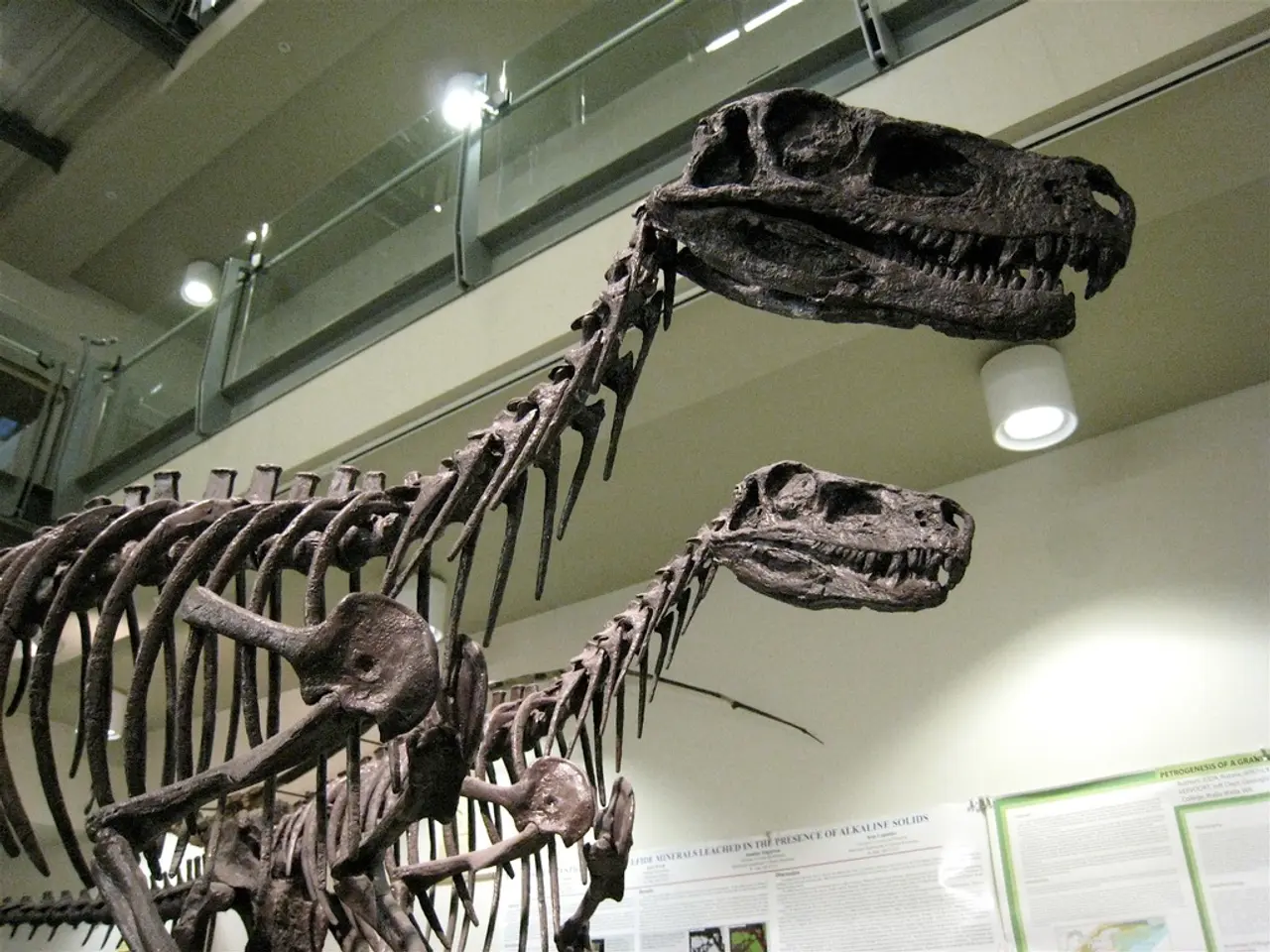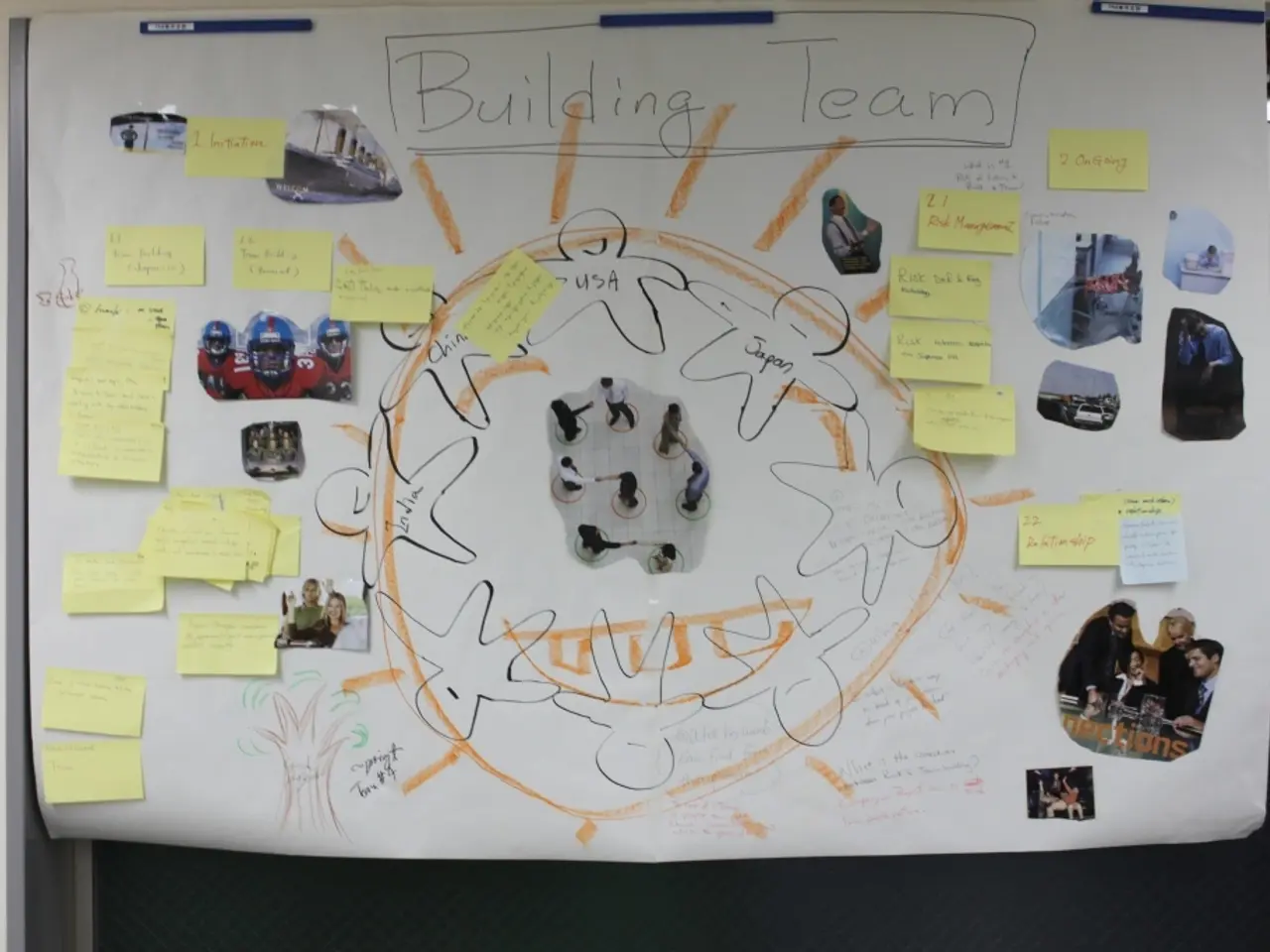Ancient Marine Reptile Flippers May Provide Solution to Noise Pollution Crisis
In the depths of the Jurassic ocean, a large marine reptile named Temnodontosaurus roamed, its unique wing-like flippers providing it with an extraordinary advantage - the ability to move almost silently through water.
Researchers have discovered that the specialized flippers of the Temnodontosaurus, which lived between 183 and 181 million years ago, had a serrated trailing edge reinforced by novel cartilaginous structures called chondroderms. These adaptations suppressed self-generated hydrodynamic noise during swimming, enabling the animal to hunt effectively in low-light or dark, deep-water environments.
The chondroderms along the flipper’s trailing edge reduced turbulent wakes and minimized noise, providing hydroacoustic advantages by decreasing sound production and water resistance. This combination of morphology and skin texture functioned as a flow control system that muffled movements, a sophisticated evolutionary feature never before observed in any marine animal, living or extinct.
The serrated edge of the Temnodontosaurus flipper suppressed hydrodynamic noise, providing stealth during hunting. This stealth capability, similar to how owls’ wing feathers produce quiet flight in air, could inspire modern solutions to reduce noise pollution caused by ships. By mimicking the zigzag, serrated trailing edges and flow control devices of these flippers, it could be possible to design ship components or propellers that minimize turbulence and noise generation, potentially benefiting marine ecosystems impacted by ship noise pollution.
The study, originally published by Cosmos under the title "Dinosaur-age marine reptile flippers could solve noise pollution," highlights the importance of auditory cues for seagoing animals, past and present, and expresses concern about the negative impact of increased ambient noise from human activities on aquatic life. The authors propose that the ancient solution of serrated flippers could be applied to modern problems, such as reducing noise pollution from shipping and offshore wind farms.
Ichthyosaurs, dolphin-like marine reptiles, evolved at least 250 million years ago from early reptiles which returned to the seas. The first Temnodontosaurus specimen was found by Mary Anning and her brother Joseph in Dorset, England in the 1810s. Temnodontosaurus could grow to about 9m long and had one of the largest eyes of any animal living or extinct, suggesting that it could have hunted in dimly lit open ocean environments. Some ichthyosaurs grew to be enormous and may have rivalled the blue whale for size.
The discovery of the Temnodontosaurus' unique flippers offers a promising biological blueprint for quieter, more environmentally friendly maritime technology. As we continue to explore and understand the adaptations of ancient marine creatures, we may find solutions to modern problems that not only benefit humanity but also preserve and protect our marine ecosystems.
- The stealth capabilities of the Temnodontosaurus, as a result of the serrated edge of its flippers reducing hydrodynamic noise, could potentially inspire modern solutions in medical-conditions related to noise pollution, such as the development of quieter ships for marine health-and-wellness and reducing noise levels that impact marine life.
- The advancements in environmental-science, specifically the understanding of how the Temnodontosaurus' unique flippers reduced turbulent wakes and minimized noise, could potentially lead to technological innovations that address noise pollution caused by modern industries, including shipping and offshore wind farms.




